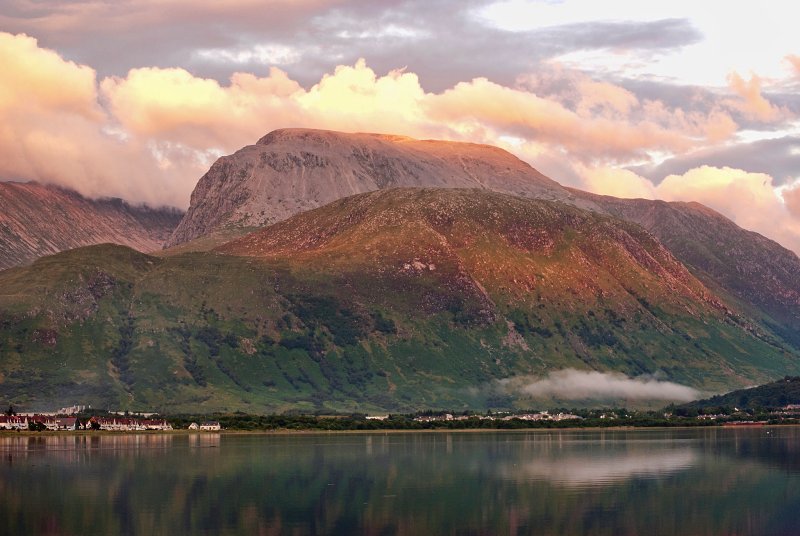
Motto: Aonaibh Ri Chéile (Let Us Unite)
Historic Seat: Tor Castle
District: Lochaber
Associated Surnames: Clark, Clarkson, Clerk, Lonie, MacAlonie, MacClerie, MacChlerich, MacChlery, MacGillonie, MacIldowie, MacKail, MacMartin, Maconie, Macourlic, MacSorley, MacUlric, MacVail, MacWalrick, Martin, Paul, Sorely
Associated Tartans:
Early Cameron Genealogy and History:
(Excerpt from "The Scottish Clans and Their Tartans", James Grant, 1906)
The first member of this family was Ewen Cameron, son of Ewen, thirteenth Chief of Lochiel, by his second wife, Marjory Macintosh. The family were known locally as Sliochd Eoghainn'ic Eoghainn, or "the children of Ewen, the son of Ewen."
Donald Cameron, the second Laird of Erracht, whose residence was a kind of farm-house, near Corpach in Inverness-shire, was born shortly before the insurrection of 1715 ; "for we are told," says MacKenzie, in his History of the Clan Cameron," that he was quite an infant when his father joined the Earl of Mar, to fight at the battle of Sheriffmuir1, in which he was slain."
Thirty years later, Donald joined Prince Charles, and, under Locheil, was second in command of the Camerons at the muster in Glenfinnan, as Cameron of Fassifern, who was actually the second, by his position in the tribe, had not, as yet, come out.
The latter was Ewen, son of John, the Tanister, a younger brother of the great Locheil, and his wife was Lucy Campbell of Barcaldane, whose father succeeded to the estate of Glenure, on the death of her uncle, who was shot at the fury of Ballachulish, in Appin, by Allan Breac Stewart, otherwise known as Vic Ian Vic Alaster - a crime for which the Laird of Ardsheil was judicially murdered by the Duke of Argyll, at the Castle of Inverary.
After the battle of Culloden2, Donald Cameron of Erracht was a homeless wanderer among the mountains for three years. He married Marjory, daughter of MacLean of Drimnin in Morven, and had four children, the eldest of whom was afterwards the famous Sir Alan Cameron, and the youngest, a daughter, who married Cameron of Scamadale, and had a son, Lieutenant Alexander Cameron, who commanded the 79th Highlanders at Waterloo, during the last three hours of the engagement.
The eldest son of Donald, Sir Alan Cameron of Erracht, K.C.B.3, was known as old Cia mar tha, from always addressing his soldiers in their native Gaelic. Having caused offence, by his attentions to the young and attractive widow of Cameron, chieftain of a branch of the clan, known as Mac Ile Onaich, he was challenged by another Cameron, known as Fear Mhorsheirlich. The duel took place on a bank of the Lochy, and Alan, having been wounded by his adversary, became infuriated, and dealt the latter a blow on the head with his claymore which killed him. He was compelled to seek safety in flight, and he subsequently went to Mull. Through his uncle's influence, he became clerk in the customs at Greenock; but, disliking desk-work, he went to America and joined the old 84th or Royal Highland Emigrants, and was present at the defence of Quebec against the insurgent general, Arnold. He was taken prisoner, and immured for two years in the common prison of Philadelphia. He was placed on half-pay, as Lieutenant of Tarleton's Dragoons.
Roused by the alarms and perils of 1793, on the 17th of August in that year, he received letters of service empowering him to raise a regiment of Highlanders; this battalion was formed at the sole expense of Mr Cameron and his officers, eleven of whom were gentlemen of the clan.
The corps, numbered as the 79th or Cameron Highlanders, mustered 1000 strong, and Alan Cameron was gazetted as lieutenant-colonel, commandant. As such, he led it through the severe campaigns of 1794-95 in Flanders till it embarked for the West Indies. Two years at Martinique reduced its strength so greatly that, in 1797, the battalion was broken up and 210 joined the Black Watch.
Colonel Cameron and his officers repaired to the Highlands, and in 1798, soon raised a second 79th regiment, which mustered at Inverness, 780 strong. It served in the expedition to the Helder in 1799. In 1800, Alan Cameron embarked with his Highlanders for Ferrol, and then joined Abercrombie in Egypt. In 1804, he formed a second battalion, 800 strong; he served in Zealand, under Lord Cathcart; in the campaign of Corunna, and subsequently afforded Wellington material aid at the capture of Oporto, and won a gold medal.
On the 25th of July 1810, Sir Alan was appointed a major-general; in 1819, a lieutenant-general, and K.C.B. He lived to an advanced age, and was doomed to see his family drop around him; his eldest son, Philip, when leading a charge at Fuentes d'Onor; his nephew and orphan grandson, of fever in the West Indies. He died at Fulham on the 9th of March 1828.
Of his immediate kindred, he left only one son, Lieutenant-Colonel Nathaniel Cameron, fourth of Erracht, who, until the close of the war (when the corps was disbanded), commanded the 2nd Battalion of the Cameron Highlanders, and followed to the grave the remains of his veteran parent.
Lieutenant-Colonel Cameron married Letitia Pryce, only daughter of the Rev. John Curry, and had ten children, the eldest Nathaniel, fifth of Erracht, married Charlotte, daughter of Loftus Tottenham, Esq., County Limerick.
(End excerpt)
Next page: Clan Campbell
Footnotes:
1 The Battle of Sheriffmuir (1715): The Battle of Sheriffmuir was fought on 13 November 1715, led by John Erskine, 6th Earl of Mar, standard-bearer for the Jacobite cause in Scotland, and British Government forces, led by John Campbell, 2nd Duke of Argyll. It took place on the slopes of the Ochil Hills in Scotland, just inside the Perthshire border. Read more about the Battle of Sheriffmuir at Wikipedia.
2 The Battle of Culloden (1746): The Battle of Culloden was fought on 16 April 1746, on Drummossie Moor, near Culloden, east of Inverness Scotland, between Scottish forces led by Charles Edward Stuart (Bonnie Prince Charlie) and English forces led by William Augustus, Duke of Cumberland. It was the final confrontation of the Jacobite rising of 1745. Read more about the Battle of Culloden at Wikipedia.
3 K.C.B.: Knight Commander, The Most Honourable Order of the Bath. Read about the Order of the Bath at Wikipedia.
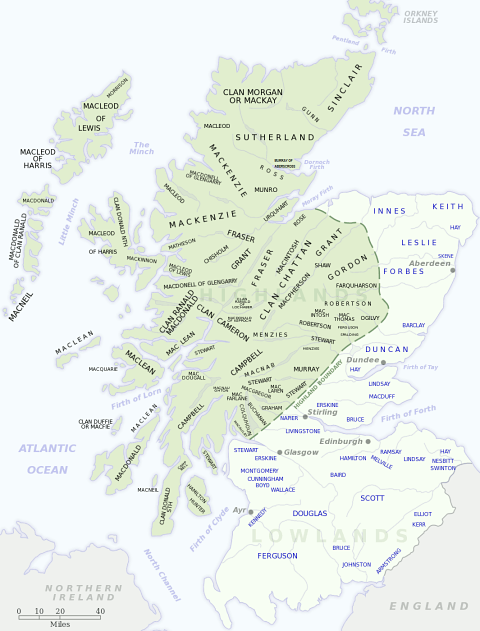
Distribution of Scottish clans and families
View larger map at Wikimedia Commons
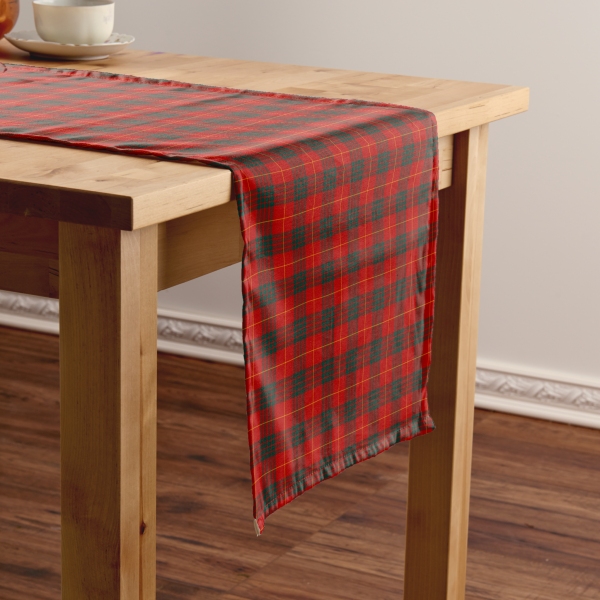
Browse the Clan Cameron Tartan Collection with home decor, personal accessories, crafting, paper products, and more.
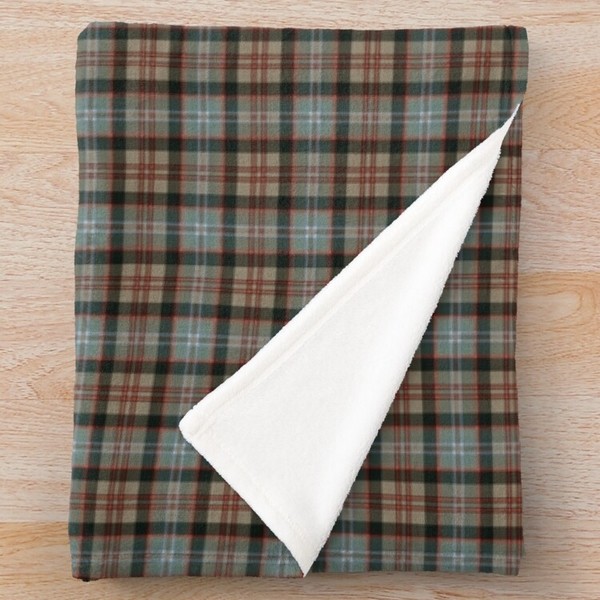
Browse the Lochaber Scotland District Tartan Collection with clothing, home decor, accessories, electronics cases, and more.
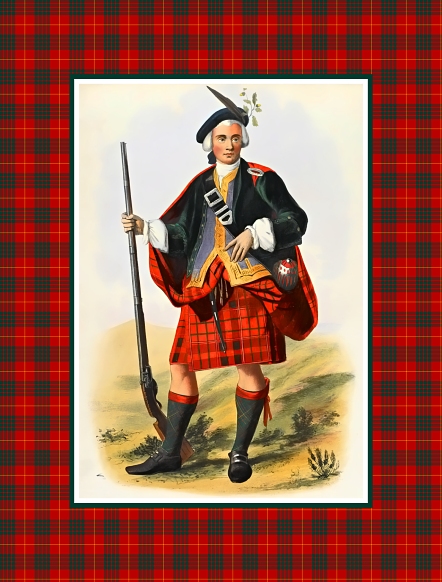
Clan Cameron Postcard: Digitally cleaned and enhanced vintage illustration with tartan frame. (Zazzle)